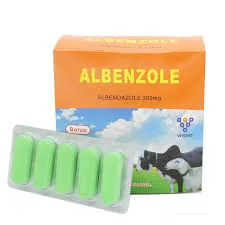- Afrikaans
- Albanian
- Amharic
- Arabic
- Armenian
- Azerbaijani
- Basque
- Belarusian
- Bengali
- Bosnian
- Bulgarian
- Catalan
- Cebuano
- Corsican
- Croatian
- Czech
- Danish
- Dutch
- English
- Esperanto
- Estonian
- Finnish
- French
- Frisian
- Galician
- Georgian
- German
- Greek
- Gujarati
- Haitian Creole
- hausa
- hawaiian
- Hebrew
- Hindi
- Miao
- Hungarian
- Icelandic
- igbo
- Indonesian
- irish
- Italian
- Japanese
- Javanese
- Kannada
- kazakh
- Khmer
- Rwandese
- Korean
- Kurdish
- Kyrgyz
- Lao
- Latin
- Latvian
- Lithuanian
- Luxembourgish
- Macedonian
- Malgashi
- Malay
- Malayalam
- Maltese
- Maori
- Marathi
- Mongolian
- Myanmar
- Nepali
- Norwegian
- Norwegian
- Occitan
- Pashto
- Persian
- Polish
- Portuguese
- Punjabi
- Romanian
- Russian
- Samoan
- Scottish Gaelic
- Serbian
- Sesotho
- Shona
- Sindhi
- Sinhala
- Slovak
- Slovenian
- Somali
- Spanish
- Sundanese
- Swahili
- Swedish
- Tagalog
- Tajik
- Tamil
- Tatar
- Telugu
- Thai
- Turkish
- Turkmen
- Ukrainian
- Urdu
- Uighur
- Uzbek
- Vietnamese
- Welsh
- Bantu
- Yiddish
- Yoruba
- Zulu
Noy . 21, 2024 14:44 Back to list
veterinary antifungal drugs
Veterinary Antifungal Drugs An Overview
Antifungal drugs play a crucial role in veterinary medicine, as fungal infections can significantly impact the health of animals. Fungi are a diverse group of organisms, and some can cause serious diseases in pets, livestock, and other animals. The increasing prevalence of fungal infections, coupled with the potential for zoonotic transmission (the spread of infections from animals to humans), underscores the importance of understanding veterinary antifungal drugs.
Types of Fungal Infections in Animals
Fungal infections in animals can be classified into two main categories superficial and systemic. Superficial infections, such as ringworm (Dermatophytosis), primarily affect the skin, hair, and nails, causing itching, inflammation, and hair loss. Systemic infections, on the other hand, involve deeper organs and can be life-threatening. Common systemic fungal infections include aspergillosis, cryptococcosis, and histoplasmosis, which primarily affect mammals, including dogs and cats.
Classes of Antifungal Drugs
Veterinary antifungal drugs can be grouped into several classes based on their chemical structure and mechanism of action
. The most commonly used include1. Azoles This class of drugs, which includes ketoconazole, itraconazole, and fluconazole, works by inhibiting the synthesis of ergosterol, a vital component of fungal cell membranes. Azoles are commonly used to treat a variety of fungal infections in animals.
2. Allylamines Terbinafine is an example of an allylamine that is effective against dermatophytes. It disrupts the synthesis of ergosterol, leading to cell membrane instability and eventually cell death.
veterinary antifungal drugs

3. Polyenes Amphotericin B and nystatin belong to this class and are often reserved for severe systemic infections. They bind to ergosterol in the fungal cell membrane, increasing permeability and leading to cell lysis.
4. Echinocandins These antifungals, including caspofungin and micafungin, inhibit the synthesis of glucan in the fungal cell wall, making them effective against certain yeasts and molds.
Considerations in Veterinary Antifungal Therapy
When treating fungal infections in animals, several factors must be taken into account. The choice of antifungal drug depends on the type of infection, the species of the affected animal, and the severity of the condition. Additionally, the potential for drug interactions and adverse effects must be carefully evaluated.
While antifungal therapy can be highly effective, it is essential to use these medications judiciously. Overuse or inappropriate use can lead to the development of drug-resistant fungal strains. Therefore, veterinarians often recommend a combination of antifungal therapy and supportive care, such as improving hygiene, ensuring proper nutrition, and maintaining a stress-free environment to enhance the animal's immune response.
Conclusion
Veterinary antifungal drugs are a vital component of treating and managing fungal infections in animals. Understanding the various classes of antifungal agents, their mechanisms of action, and the considerations surrounding their use is critical for veterinarians. As fungal infections continue to challenge the health and well-being of both pets and livestock, ongoing research and development of new antifungal medications will be crucial in combating these persistent pathogens. Awareness and education about these issues will lead to better outcomes for animal patients and, ultimately, a healthier ecosystem for all.
-
Guide to Oxytetracycline Injection
NewsMar.27,2025
-
Guide to Colistin Sulphate
NewsMar.27,2025
-
Gentamicin Sulfate: Uses, Price, And Key Information
NewsMar.27,2025
-
Enrofloxacin Injection: Uses, Price, And Supplier Information
NewsMar.27,2025
-
Dexamethasone Sodium Phosphate Injection: Uses, Price, And Key Information
NewsMar.27,2025
-
Albendazole Tablet: Uses, Dosage, Cost, And Key Information
NewsMar.27,2025













